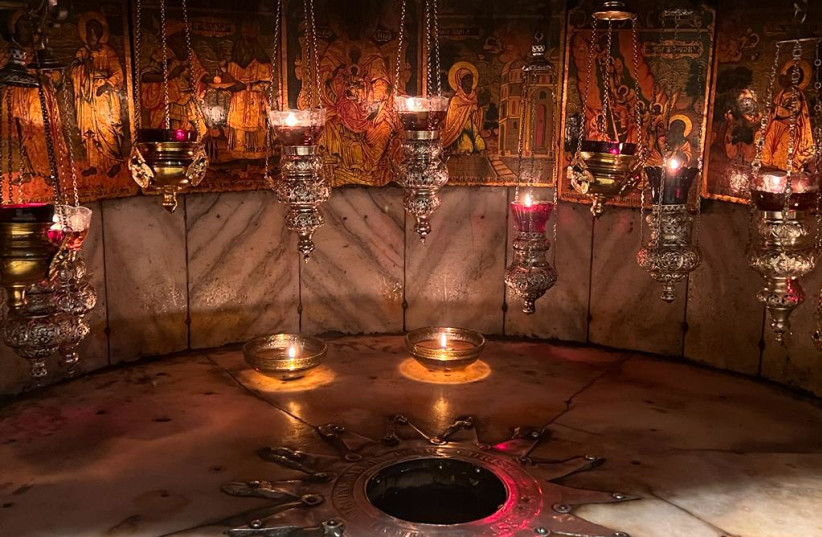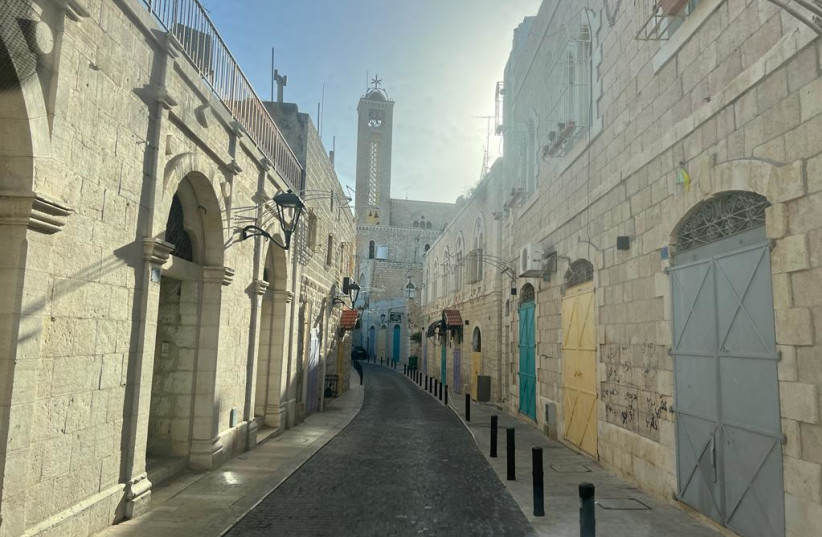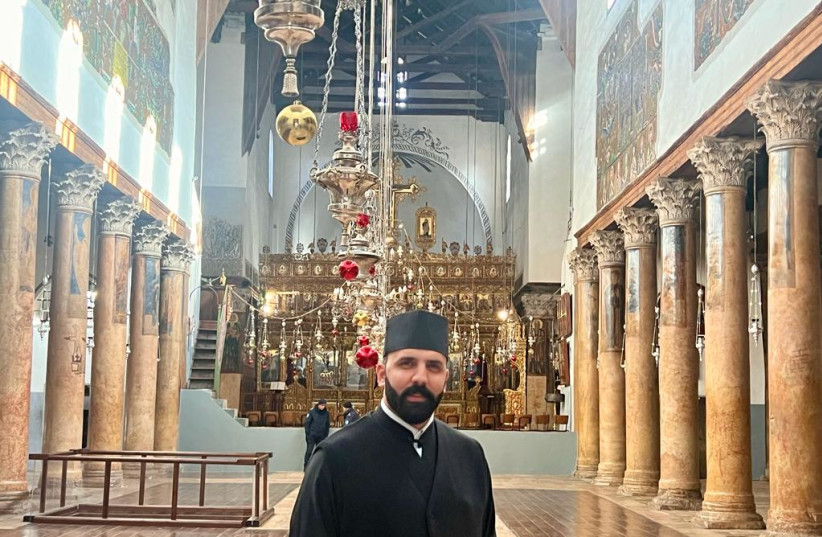A small group of Roman Catholic priests clad in traditional black robes gathered in front of the Church of Nativity on Friday. Despite the brisk wind sweeping through the air and chilling the surroundings, their smiles remained warm as they captured a collective moment in a group photograph.
On that Friday, the priests stood alone in Manger Square, starkly contrasting with the usual bustling scene outside the church just two days before Christmas. In a “normal” year, the space would teem with passersby, but this year, it was devoid of pilgrims. The festive atmosphere was notably absent—no Santas, no Christmas tree.
This year, the city canceled all festivities because of the Israel-Hamas war, casting a solemn shadow over what would typically be a joyous occasion.
“We are here celebrating Christmas,” Father Benny Dibitonto told The Jerusalem Post. He is a spiritual leader from Jerusalem with colleagues from the same denomination who have churches in Haifa, Tiberius, Jaffa, and other parts of Israel. “We must celebrate before or after the holiday because we are ‘on duty’ on Christmas. We came here to be together and for our spirituality.”

Dibitonto looked around. “Usually, it is so decorative,” he said with a sigh. “But I guess this year it is like the first Christmas.”
Jesus is believed to have been born in a cave below the Church of the Nativity. However, the priest explained, nobody knew when he was born. There were no Christmas presents, decorations, candies or eggnog back then.
“It takes us back to the roots” of the holiday, Dibitonto said, “although our hearts are broken because of the war. Our parishioners are at war. Our brothers and sisters in Gaza are suffering. We pray for them all – for both sides, of course.”

The Church of Nativity
THE CHURCH of the Nativity was built around 326 CE, commissioned by the Roman Emperor Constantine I and his mother, Saint Helena, explained Bethlehem tour guide Mohammad Adel. It was destroyed by the Samaritans in 529 and rebuilt in 540 by orders of Emperor Justinian. Standing ever since, the church is around 1,500 years old, one of the oldest in the world.
It is also the oldest church in the Holy Land. Today, it is controlled by the Greek Orthodox, although there are also areas managed by Armenian Christians and Catholics.
Since the Palestinian Authority took control of Bethlehem in 1995, the Christian population has massively declined. Today, only around 10,000 Christians live in the city of about 75,500 residents. However, the city maintains a Christian mayor, and the 2.5 million tourists who visit each year come to experience it as the birthplace of Jesus.
The Christians living in Bethlehem are of many denominations, explained Father Issa Thaljieh, head priest at the Church of the Nativity: Greek Orthodox, Catholics, Armenian, Syrian, Lutheran and Protestant. He said, however, that swarms of people have abandoned Bethlehem since the start of the war on October 7 – as they have during previous escalations.
“They go to America, other Arab countries, Europe,” Thaljieh said, adding that he has family in the US, Australia and Jordan.
“They cannot live in this difficult situation,” he told the Post. “It is not only the war; it is all the time. It is 75 years of occupation.”
COME CHRISTMAS, the city undergoes a remarkable transformation. Streets overflow with tourists and fill every nook and cranny of Manger Square. Bethlehem’s 50 large hotels reach full occupancy, and souvenir shops struggle to keep up with the demand for handmade Christian crafts.
A highlight is the midnight mass, presided over by His Beatitude Patriarch Cardinal Pierbattista Pizzaballa, the Latin Patriarch of Jerusalem. His entrance into Bethlehem, following the traditional path of Mary, marks the prelude to the grand service. In ordinary years, thousands secure tickets to the mass and plan well in advance to guarantee their place at the ceremony. However, this year, so few visitors are expected that no tickets are necessary to attend.
“It almost doesn’t feel like Christmas,” said Thaljieh, who has lived in Bethlehem his whole life and has been in his role for 12 years. “Nobody is here to celebrate with us. I’ve never seen Christmas in Bethlehem like this. Of course, we are used to other periods of the year; there have been other wars, but never on Christmas.”
The repercussions extend beyond the religious holiday, directly impacting the residents’ livelihoods. According to Adel, as the Israel-Hamas war persists into a third month, the city’s tourism industry has been decimated, leading to a substantial decline in the income of its residents.
“The economy here depends on tourism,” Adel told the Post. “The people of Bethlehem are suffering and see no solutions.”
EARLIER THIS month, the Palestinian Tourism Ministry said the sector had been incurring around $2.5 million in losses daily, estimating a total impact of about $200 million by year’s end.
“The people are not working,” Thaljieh said. “They are coming into the church and asking for support. They have food, electricity and water to pay for. No one will say they don’t have to pay.”
The church operates a charitable fund, which predates the war, dedicated to aiding the city’s elderly and impoverished residents.

However, Thaljieh said that the church’s ability to assist is also significantly influenced by donations from tourists, with visitors often making substantial contributions during their visits. He added that it works with a fundraiser in the United States to cover some costs, but it is not enough.
At the same time, the church is trying to send assistance to the around 1,100 Christians still living in Gaza, who, by multiple reports, are holed up in the city’s North and East in churches and private homes.
“I have a priest there who I call to try to understand what’s happening and how they live. They have difficulties, too – no water, electricity, shelter, food, nothing. It makes us sad,” Thaljieh said.

“We continue to tell them to be patient and we keep them in our prayers.”
Thaljieh spoke to the Post just inside the Church of the Nativity entrance. Shimmering silver ornaments hung overhead from the ceiling. Pink limestone pillars embraced the priest on both sides. He looked around his church and shook his head.
“I want to send a message of peace and love from the heart of the place where Jesus was born,” he said. “What we need is peace, love, freedom, and justice – for the Palestinians, for the world, and especially for the children.”
